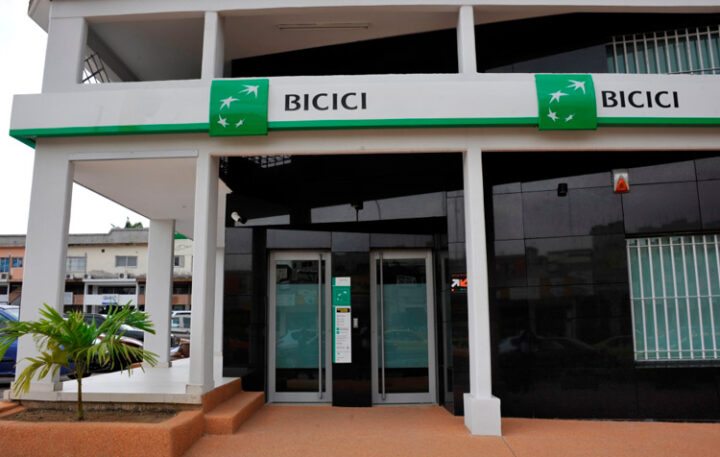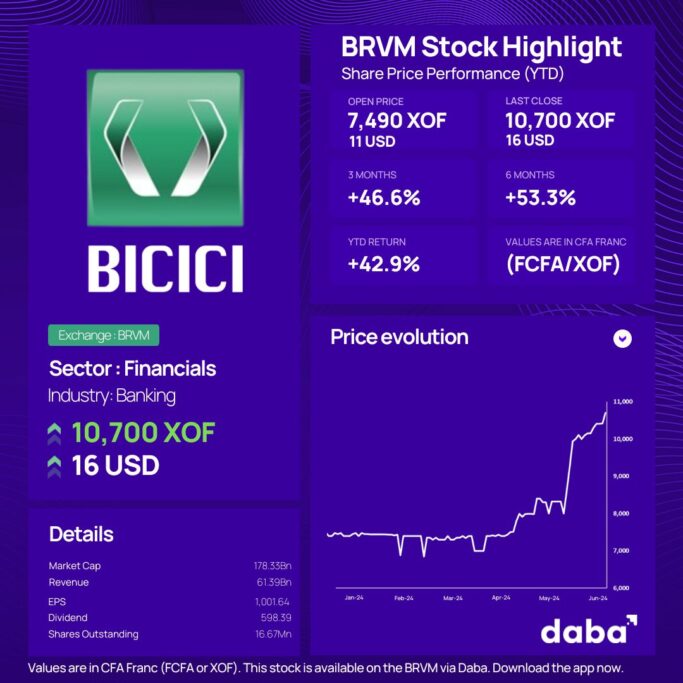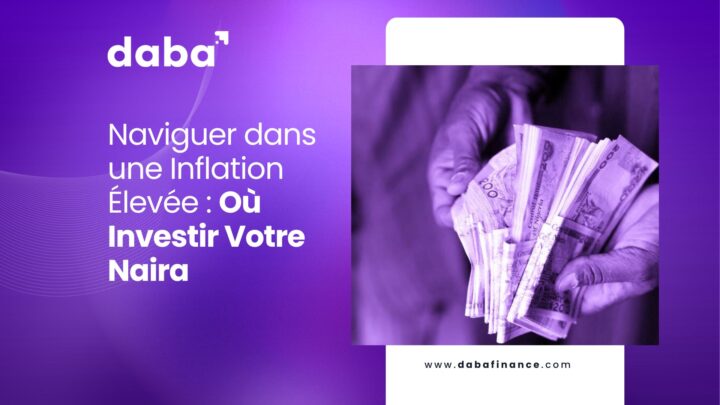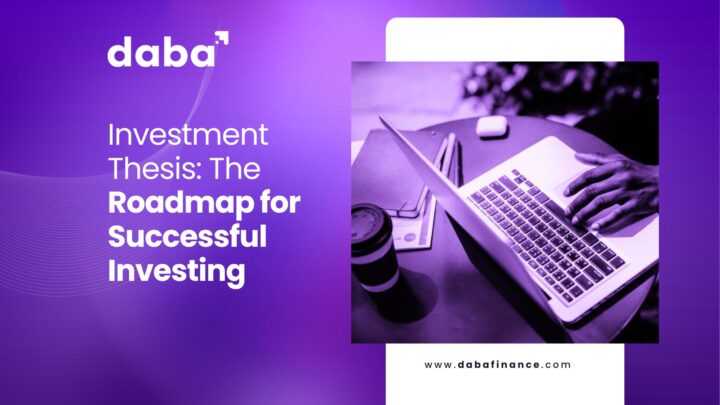En débutant l’année avec un prix d’action de 1 330 XOF (2,18 USD), Servair a enregistré une augmentation de 51,9% de son cours, se classant premier sur la BRVM en termes de performance depuis le début de l’année.
Servair Abidjan, une société anonyme dont le siège est situé à l’aéroport Félix Houphouët-Boigny à Abidjan, en Côte d’Ivoire, a rapporté une performance financière impressionnante pour le premier trimestre de 2024.
Ce début d’année robuste met en évidence des améliorations significatives des revenus et de la rentabilité, portées par des initiatives stratégiques et des conditions de marché favorables.
Lire aussi : Meilleures performances boursières sur la BRVM : récapitulatif du marché du premier semestre 2024
Points financiers saillants

Rapport d’activité trimestriel
Les activités de la société au premier trimestre ont été considérablement renforcées par la Coupe d’Afrique des Nations (CAN), tenue en janvier et février 2024 en Côte d’Ivoire. Cet événement majeur a contribué à une augmentation de 15% des revenus par rapport à la même période de l’année dernière.
Le bénéfice net de Servair Abidjan pour le 1er trimestre 2024 a atteint 371 millions FCFA, marquant une amélioration de 26,6% par rapport au 1er trimestre 2023. Cela a été réalisé grâce à l’effet combiné de l’événement CAN et à la mise en œuvre de plans d’action pour contrer l’inflation.
De plus, la société a lancé une stratégie de développement des activités non aéronautiques, en commençant par un contrat de restauration collective (GMP) en mars 2024.
Initiatives stratégiques
Servair Abidjan a démontré sa capacité à capitaliser sur des événements majeurs et des initiatives stratégiques pour améliorer ses performances financières.
La signature d’un accord de redevance DSP (Délégation de Service Public) à la fin de mars 2024, avec un processus de promulgation en cours, souligne l’approche proactive de la société pour élargir son portefeuille d’activités.
Performance boursière
Les performances financières impressionnantes de Servair Abidjan se reflètent dans la performance de son action (ABJC).
La société a clôturé sa dernière journée de négociation (mardi 2 juillet 2024) à 2 020 XOF par action sur la BRVM.
En débutant l’année avec un prix d’action de 1 330 XOF, Servair Abidjan a enregistré une augmentation de 51,9% de sa valorisation boursière, se classant premier sur la BRVM en termes de performance depuis le début de l’année.
Les actionnaires ont des raisons d’être optimistes, car l’action a accumulé 10% au cours des quatre dernières semaines, faisant de lui le sixième meilleur performeur de la BRVM. Cette performance solide met en évidence le potentiel de croissance et l’attrait d’investir dans Servair Abidjan.
Vous avez peut-être manqué le rallye ABJC, mais avec les recommandations boursières hebdomadaires offertes par Daba Pro, vous pouvez repérer et profiter d’opportunités comme celle-ci avant les autres. APPUYEZ ICI pour obtenir notre service premium pour des décisions d’investissement informées.
Signification pour l’industrie et les investisseurs potentiels
Les performances impressionnantes de Servair Abidjan témoignent de la résilience et du potentiel de l’industrie de l’aviation et de la restauration en Afrique.
La capacité de l’entreprise à tirer parti des grands événements, à mettre en œuvre des initiatives stratégiques et à s’étendre aux secteurs non aéronautiques démontre un modèle d’affaires solide et une stratégie de croissance.
Pour les investisseurs potentiels, Servair Abidjan présente une opportunité d’investissement attrayante. Les solides résultats financiers de l’entreprise, associés à ses performances boursières impressionnantes, soulignent son potentiel de croissance et de rentabilité à long terme.
Les investisseurs cherchant à exploiter cette opportunité peuvent facilement acheter et échanger des actions de la BRVM comme celles de Servair Abidjan en utilisant la plateforme Daba, qui offre un moyen pratique d’investir dans des actions performantes sur la BRVM, donnant accès à des marchés dynamiques et en pleine croissance.
Conclusion
Le rapport du 1er trimestre 2024 de Servair Abidjan reflète un début d’année solide, avec une croissance significative des revenus et des bénéfices nets. L’impact positif de la Coupe d’Afrique des Nations et les initiatives stratégiques pour se diversifier dans les activités non aéronautiques ont contribué à ces résultats.
L’approche proactive de la société pour contrer l’inflation et élargir son portefeuille d’activités la positionne bien pour une croissance continue au cours des prochains trimestres.
Pour les investisseurs, les performances impressionnantes de l’action et la santé financière solide de la société en font un investissement attrayant.
Les plateformes comme Daba offrent un moyen pratique d’investir dans Servair Abidjan et d’autres actions performantes de la BRVM, fournissant un accès à des opportunités d’investissement prometteuses sur les marchés dynamiques de l’Afrique.








